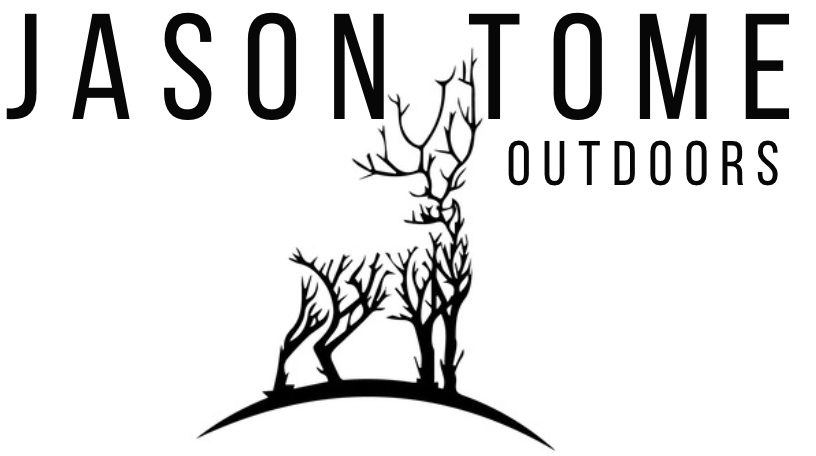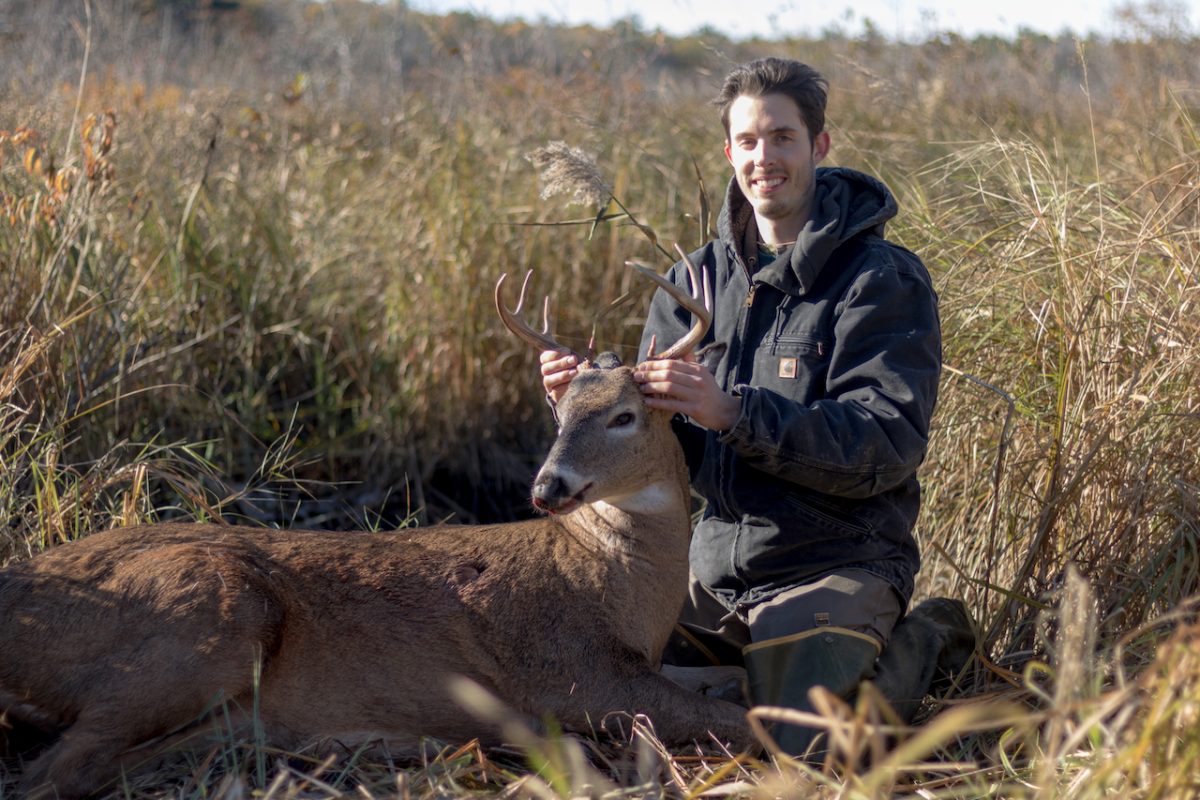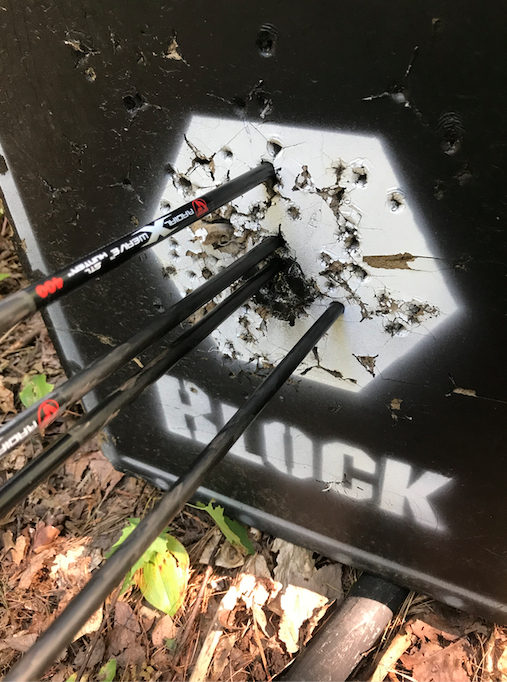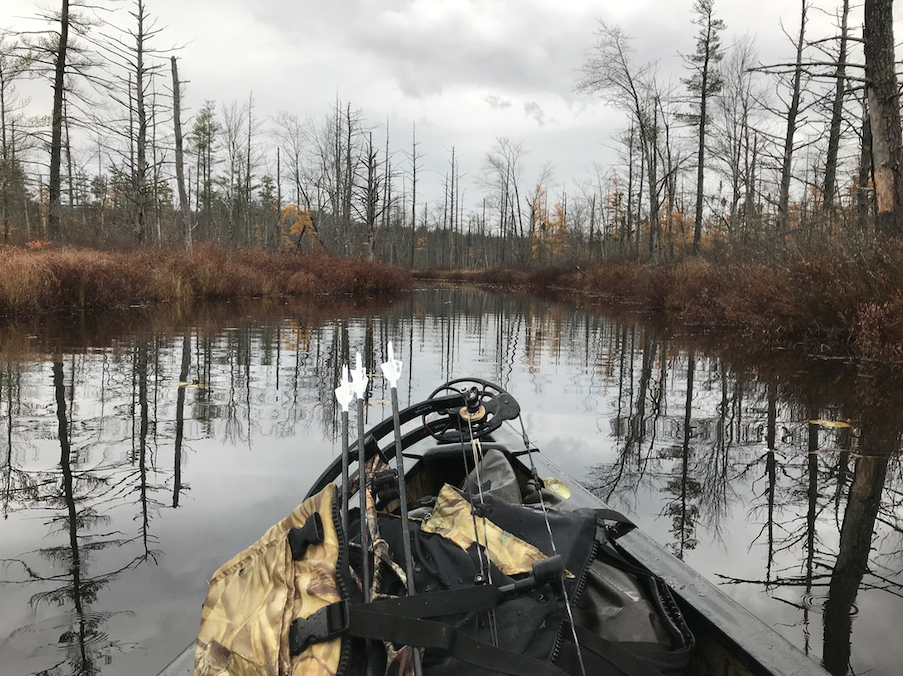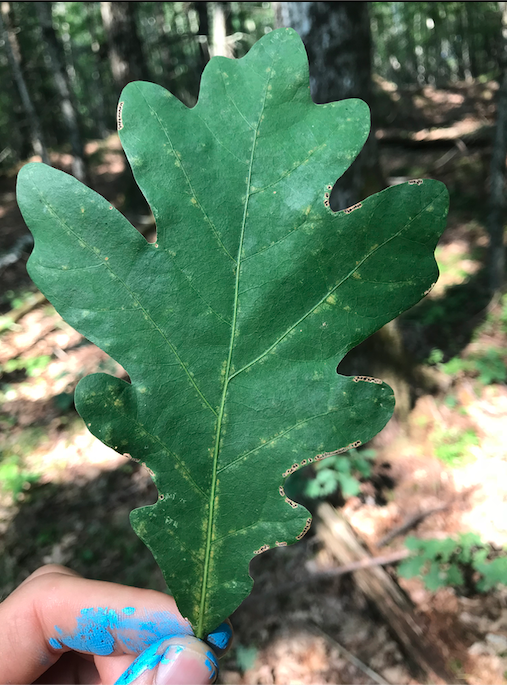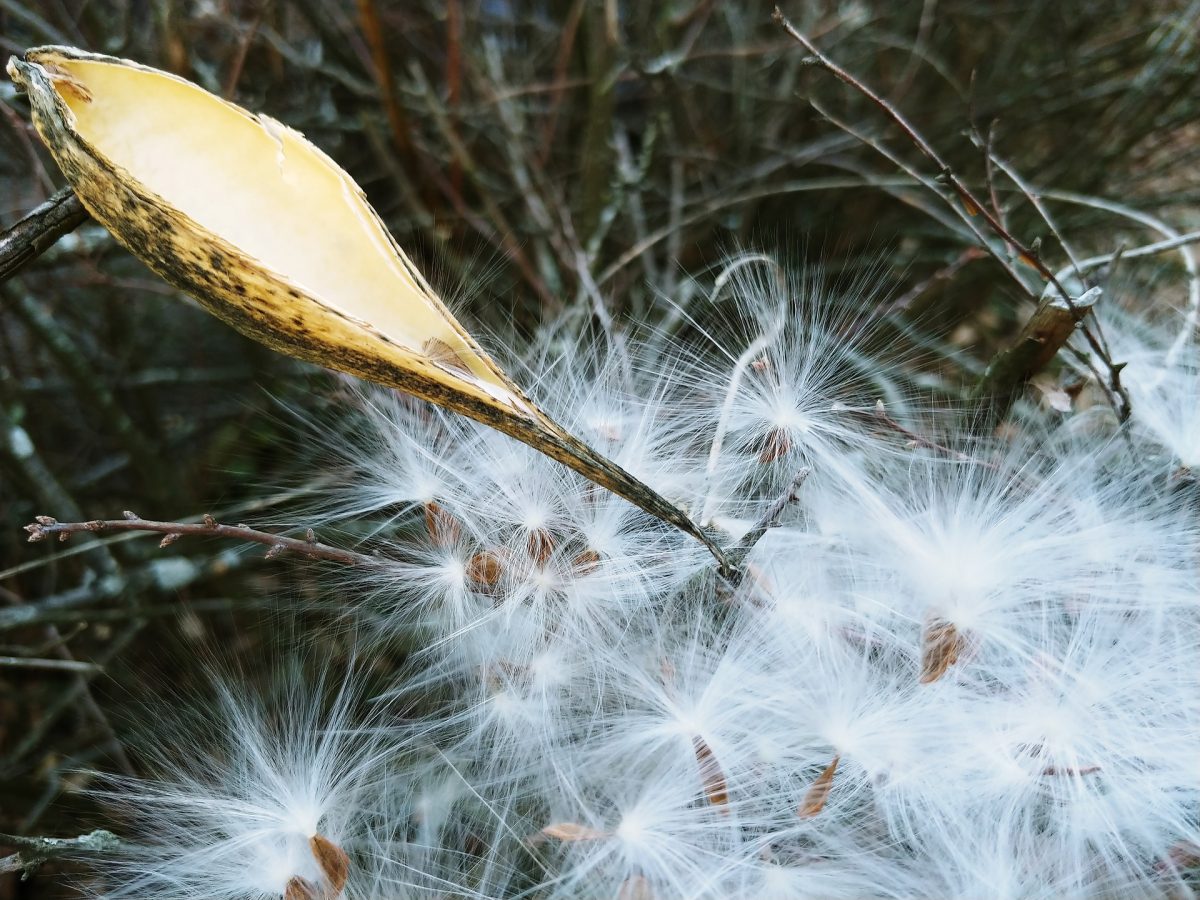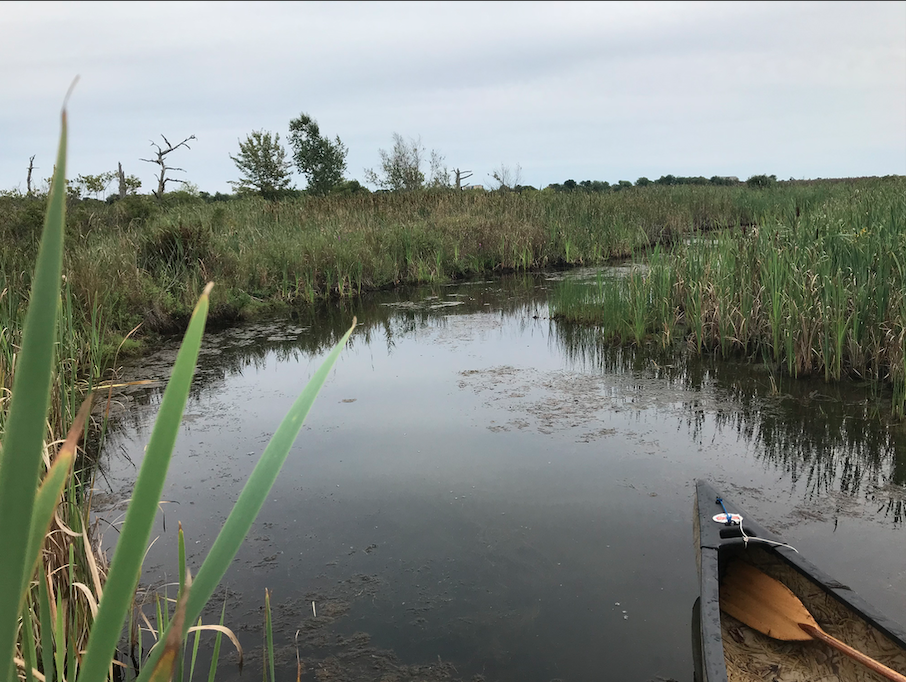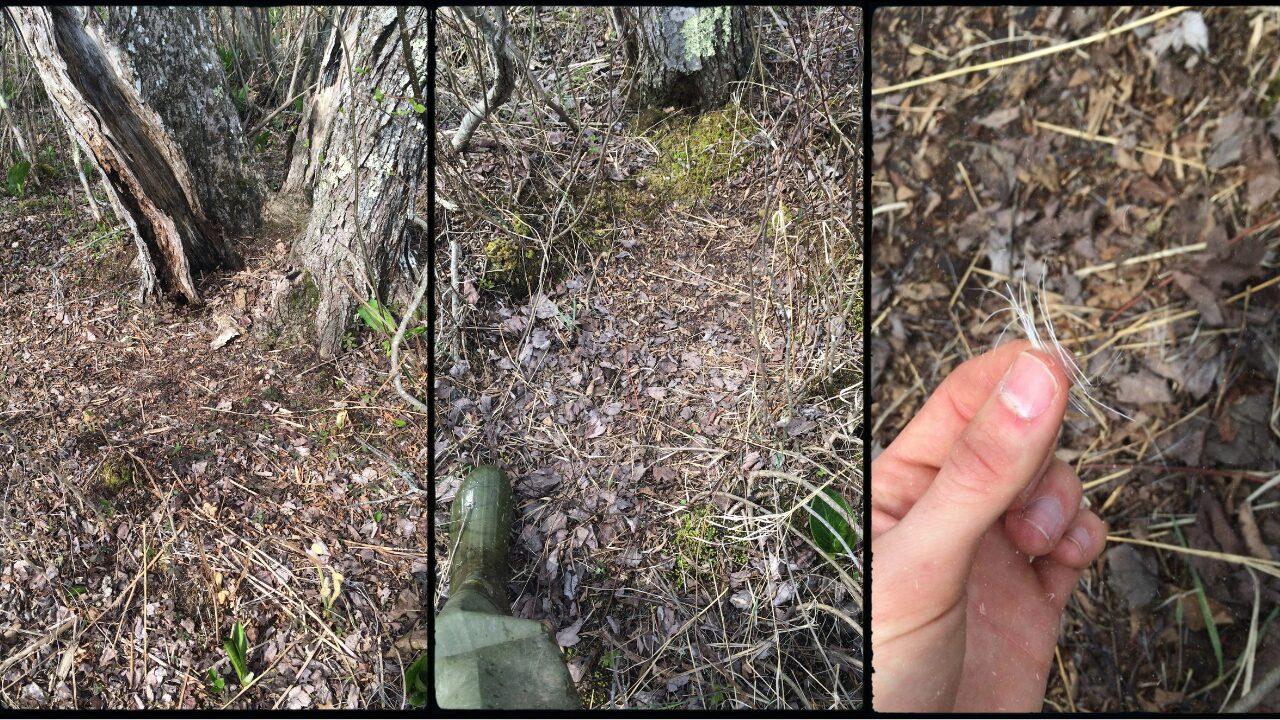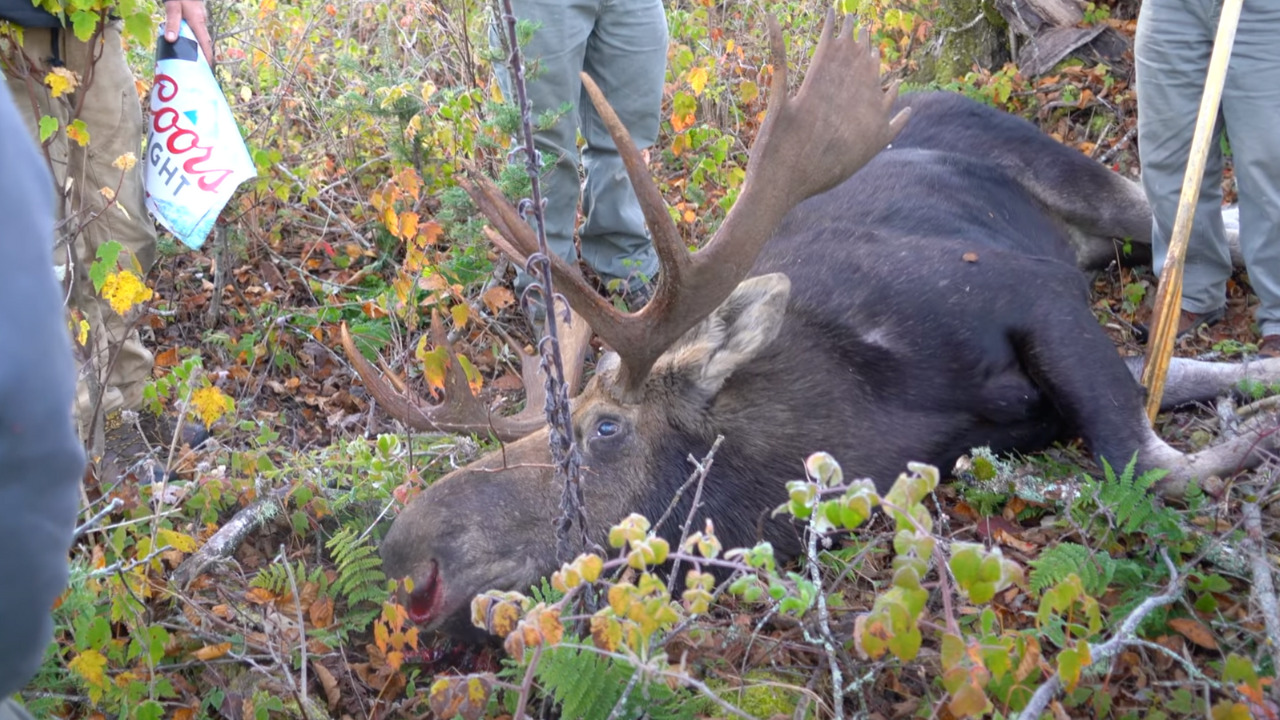These are the 15 all-time most important tips deer hunters should use and apply to increase their hunting success. These tips will be beneficial whether you’re a beginner or an expert.
From my decades of deer hunting experience, these have been the top 15 things that have leveled up my deer hunting success the most once I applied them.
Table of Contents
1. Understand Local Rut Phases and Dates
Knowing local rut phases and dates is important for hunting deer, especially bucks. When I was first learning how to hunt deer I’d heard of the pre-rut, rut, and post-rut, but it wasn’t until later in my hunting career that I truly understood how deer acted at each of these stages. Once I understood each stage deer movement started to make a lot more sense. I was able to choose the when, where, and why I should be hunting particular stands rather than hoping to get lucky.
There is a lot of information on the internet today stating that the rut starts on a specific date. Be careful and do some research on this for your state. Internet-based information comes from people all across the United States. This can be confusing because the rut is different depending on where you live. This makes getting the correct information difficult. Contacting your local wildlife department may help provide you with some answers.
Additionally, trail camera pictures can tell you a lot about the different phases of the rut. When do you see the first sign of rut activity? What about the most activity? When does the activity stop? There’s no better intel than information from the exact properties you will be hunting!
Check out my post: When is the Whitetail Rut in Maine
2. Understand Local Hunting Pressure
In my early years of hunting deer, there was some mention of hunting pressure, but I never took it seriously. I occasionally saw hunters, but I suppose I thought that hunting pressure didn’t exist in Maine. I believed that hunting pressure was only found in populated and heavily hunted states such as Michigan and Pennsylvania. How could it apply to Maine? Maine is so vast.
I was wrong. I went years without seeing mature bucks. Frustrated, I knew I had to make a change. Finally, I decided to test if hunting pressure was my problem. I chose to scout areas with a lot less hunting pressure. The next season I saw success right away. I started to see more bucks.
After seeing some success I began doing two things; first, I dedicated a lot of my scouting time to finding isolated hunting spots. This would ensure minimal if any hunting pressure. The second was using hunting pressure to my advantage. By predicting how a big buck would react to hunting pressure from other hunters I was able to place myself in strategic locations. Both of which have been very successful tactics. I was learning where to find pressured bucks.
Hunting pressure varies by property and by state. It is helpful to get an idea of how much hunting pressure is occurring on the properties you hunt. If other hunters are hunting deer where you hunt, consider finding a new property to hunt or finding the least hunted sections of a property.
3. Scouting & Scouting Efficiently
You can do more good by doing less during hunting season. Let me explain. Instead of spending time during the hunting season trying to locate a buck, you could have already located many big buck hangouts outside of the hunting season while scouting outside of the hunting season.
Doing this allows you to focus on hunting during the season and less on scouting. More high-quality hunting time increases your chances of shooting a deer greatly! That is not to say that scouting in-season is a bad tactic, this can also work with great success. I like to do my homework first, and then scout in-season if my pre-season scouting isn’t paying off.
Deer Aren’t Everywhere
Deer and especially bucks are not everywhere, you have to find where they are to hunt them. By scouting right after the season ends, or in the spring right after snow melts is your best bet. Scouting during these times of the year allows for rut sign that was made in prior seasons to be easily visible. The sign you want to be looking for is scrapes with licking branches and big, tall rubs and big tracks. These are all classic signs that a big buck is in the area.

Why would you spend time scouting areas where the deer were last year? Using this sign you can predict that bucks will be back in this area at the same time the following year. Whitetails are very habitual creatures. They often keep the same patterns at the same time (often within a few days) year after year. This is why if you find good buck sign in an area it could be a good place to hunt the following year.
By far, I have found off-season scouting to be more valuable for learning how to hunt deer than scouting during the hunting season. Scouting missions outside of hunting season enables you to scour a property without fear of bumping bucks out of the vicinity. This results in much better intel on where the bucks are and to find many good areas to hunt. This way the hard work is done when hunting season rolls around.
For more information on maximizing scouting efficiency check out: 15 Best Tips for Scouting Deer Using Google Earth.
4. Practicing with Broadheads & Expandables
Shooting broadheads well before the hunting season is a must when bowhunting deer. A lot of hunters don’t take this step seriously, I’ll admit I used to only take a few shots with my broadheads right before the season too.
When I first got started bowhunting deer, I missed a handful of embarrassingly easy shots at does. I knew I had to make a change to prepare for success and be a more ethical hunter. I wouldn’t be able to live with myself if I missed a chip shot at a big buck.
After getting serious about practicing with broadheads I learned a lot about broadhead accuracy. What I found is that broadheads can be finicky. Making sure broadheads are dialed in is a small step that can pay big dividends toward success.
It is still important to check if expandable broadheads are flying like your field points. Often they shoot slightly different. Small adjustments to your sights might need to be made.
Currently, I am shooting expandables. I never practice with field points once the season approaches. I do the same thing when I shoot fixed blades. Sure, I chew up targets but it’s big confidence builder for me to know I can make the shot when it presents itself. Confidence is half the battle when bowhunting deer.
5. Entrance and Exit Routes
Many hunters don’t give whitetails enough credit for how smart they are, I know I didn’t. Years of learning from mistakes have taught me how deer have such an incredible ability to learn and adjust to negative stimuli. For this reason, it is crucial to pay attention to your entrance and exit routes when learning how to hunt deer.
What Are Entrance And Exit Routes?
They are routes that hunters take to get back and forth from a treestand. Why are they important? Good routes minimize deer seeing, hearing, or smelling you when heading to your stands, keeping stands fresher longer. If deer pattern you while you’re walking to your treestand it will only take a hunt or two before they associate your stand location with danger. Once they pattern you they will change their routines or avoid the area altogether.
Why Entrance And Exit Routes Are Important
Often hunters will leave their treestands the same way they entered them. This can be a mistake. For example, by entering a treestand through a field in the evening there will likely be no deer in the field. This is because they’re still bedding. But, when you leave through a field at night after hunting hours are over, deer will likely be in the field feeding. If you walk through the field the same way you entered your stand, you will spook the feeding deer. Deer learn fast and will adjust by coming into the field later in the night, or avoiding the field altogether.
Routes are especially important when considering mature bucks. These bucks are smart and won’t stand for human intrusions. One mistake and they will likely never be back. Effective routes reduce, to the fullest extent possible, the odds of alerting does and bucks to your presence. If you’ve been bumping does and fawns all season the chances of seeing a buck during the rut declines. Bucks want to be with does during the rut. If you’ve alerted the does on your property to your hunting spot, there won’t be any does. Consequently, you will be less likely to see bucks during the rut.
Planning routes is critical to get in and out of treestands undetected when bow hunting deer. Effective routes will keep deer unsuspecting, keeping stress levels low and increasing odds of shooting a deer.
6. Don’t Over-Hunt Stands & Have Many Stands
Overhunting individual treestands on an individual property is a big mistake. I used to make it all the time. I would overhunt stands so much that I would stop seeing deer altogether, then continue to hunt them! Repeated hunting of a stand will keep deer away from that area. I finally learned when this happens to stop wasting time and move on.
I am a strong believer that each time you hunt a stand the odds of taking any deer, let alone a big buck starts to diminish quickly. Almost every one of my bucks that I’ve shot has been on the first sit or two of the year. This is no coincidence.
Even with effective entrance and exit routes, if you hunt the same stand repeatedly deer will catch onto you at some point. This is almost inevitable when hunting deer. Every time a stand is hunted more lingering scent is left, making “burning” a stand more likely.
How do you avoid burning stands?
Move to another stand!
By not overhunting one stand you give it time to “cool down”. This lets scent dissipate and keep deer stress levels low. This keeps deer comfortable and moving in the area. Your stand will never be as good as the first few sits of the season but the longer the intervals the “fresher” it will become. Fresh stands are more likely to have deer pass by them because they like to be in low-stress environments.
Placing many stands on a property allows for a good stand rotation and allows you to hunt different wind directions. This keeps your pressure spread out between stands. This combined with good entrance and exit routes works really well for keeping stress low at all your stand locations. resulting in higher odds of shooting a deer.
7. Hunt Multiple Properties
To take it another step further, rotate hunting on different properties. Like you can over-hunt individual stands you can also over-hunt individual properties. By hunting on multiple properties you will further ensure that you are not overhunting any one particular property.
If an area is hunted heavily by you or others it is not uncommon to change the deer behavior of the entire area. By spreading out hunting pressure onto different properties deer won’t be able to pattern you. They also won’t catch onto the fact they are being hunted as quickly. This keeps stands fresher and deer stress levels low resulting in better hunts out of each stand.
8. Within Multiple Properties Have Many Stands
To further increase your odds have many stands on multiple properties. This will make it extremely difficult for deer to catch on to your patterns and keep all your stands “fresh” and deer relaxed.
This is how I am set up for my hunting seasons and I have seen fantastic results since I started doing this. Using this method I can hunt fresh stands during the right conditions at the right time of year all hunting season long. This has put the odds greatly in my favor and that’s what it’s all about. Having many fresh stands will dramatically increase your success.
Saddle hunting has been huge for helping me be more effective in hunting multiple stands within a single property as well as multiple properties, keeping things fresh.
9. Hunting Stands at the Right Time
You can even take it another step further and only hunt specific stands when the time is optimal. Hunting stands at the right time has been very important to my success.
As mentioned above I am a strong believer that each time an individual stand is hunted the odds of taking a deer will begin to diminish. For this reason, it is important to only hunt stands when the time is right to avoid boogering stands up before the odds are in your favor.
When should you hunt your stands? Whitetail behavior changes throughout the hunting season based on food, weather, and time of year. Pick stands that are best depending on those conditions. By only hunting stands when the time is absolutely perfect your chances of intercepting deer are highest.
10. Stand Placement
Sure, having a plethora of stands in your arsenal is important to have more success on trophy bucks and bow hunting deer in general, but there should be a method to your madness. Otherwise, a lot of hours will be spent in a treestand not seeing many deer, let alone bucks.
Figuring out where deer are bedding and where deer are feeding will allow you to figure out their tendencies. Once you have an understanding of these tendencies you can put yourself in-between the bedding and feeding areas and intercept them. The closer you are to their bedding area the more likely you will catch a deer on their feet during daylight hours.
Hunting near rut sign is another great way to find bucks. Big, tall rubs and scrapes with licking branches offer tremendous opportunity. When I find this sign I try to determine where the buck that made this sign would bed down. In general, if you’re hunting in the low country this is usually the thickest, nastiest cover in the area. If you’re hunting in the hills this will likely be the point of a ridge. I place my stands as close as I can get to these bedding areas without being seen by the bedded deer.
11. Wind Direction and Thermals
Understanding wind direction and thermals is a key factor in learning how to hunt deer. If you do not pay attention to the wind and thermals you will get picked off by deer which will ruin your chances of success. Often, deer will slip away without you even knowing they were there at all.
To keep track of the wind direction and thermal activity I use milkweed silk. Milkweed silk is fantastic because it’s very buoyant in the air which will drift in the faintest amount of wind. Additionally, because it is so light it floats or sinks depending on what the thermals are doing. Because the milkweed silk is white it stands out well against the wooded background. By watching the milkweed silk you are able to watch exactly where your scent stream is traveling. Checking wind and thermals will help you see more deer and have better success when hunting.
12. Scent Control
You might be wondering why anyone would need to use scent control if they are already using the wind to their advantage. The reason is primarily not to keep deer from smelling you while on stand, although it definitely doesn’t hurt! But the main reason to use scent control, in my opinion, is to keep deer from smelling the tree you were hunting in after you leave.
The less scent you leave at your stand and on your entrance and exits routes the better. By using scent control your scent will smell fainter, and less threatening while hunting and after you leave. This helps keep deer from becoming alerted to your presence. Scent control results in more times you can hunt a particular tree before deer in the area catch onto you. If a treestand you have prepared is a slam-dunk spot you want to be able to hunt this spot as many times as possible when the time is right. Scent control will allow you to get the most use out of each treestand.
13. Weather Advantage
Not all days are created equal when hunting deer. The weather is a big influence on deer behavior and movement. Most days are best spent in the treestand waiting for the deer to come to you. Sometimes, when conditions are right, it may make more sense to go on the offensive and go after deer on the ground.
Windy days over 20 mph are good days to be on the ground. When wind speeds are high deer tend to hunker down and stay in their beds. If you know where deer are bedded and you think you’ve might be able to sneak up on a bedded buck windy days are great. The wind blocks any noise or movement you would make during your ambush.
Heavy rain days can also be good for the same reasons as high wind days. Downpours keep deer in their beds, making it unlikely you will see deer from your treestand. The quiet ground conditions and noisy rain patter will mask noise during your approach.
14. Put Yourself in the Mindset of a Deer
Getting into the mindset of deer has greatly helped my success when deer hunting. I have been able to more accurately hypothesize where does, bucks, and mature bucks prefer to spend the majority of their time.
For example, if you were an old mature buck that had been hunted for many seasons and likely shot at a time or two, where would you spend your time? Probably in an area where you were never bothered. Where would that be? Either in an overlooked pocket of dense cover, remote areas with low hunting pressure, or somewhere where you had the advantage to escape.
Mature bucks are not so different from you and me, they have learned from their past experiences. Older bucks have likely learned from being wounded, shot at, and/or seen other deer shot. As you can imagine those kinds of events engrain weariness into them. Because of these events, older bucks associate humans as something to be very afraid of and avoided hunters at all costs. Although it seems a little foolish, next time you are wondering where a big buck might be hiding think “where would I feel safe if I was being hunted?”.
15. Does, Small Bucks, and Big Bucks
Bucks and does live different lifestyles. For example, a does life revolves primarily around food, which is why they are generally easier to find. Does do care about security to an extent and will often bed in the same cover-type as bucks. However, they will bed closer to the food sources and are less worried about isolation.
Bucks on the other hand are more worried about security, younger bucks included. That being said, young bucks are somewhat oblivious to the reality of danger. They usually haven’t had as many negative experiences with hunters at that stage in their life. This makes younger bucks less cautious and more visible than mature bucks.
Mature bucks will be isolated and further back in the cover. These bucks don’t like to socialize as much, too many other deer around them tends to stress them out. They’re always on edge, in thick cover they can’t differentiate noises and movements made by deer and hunters. If they can’t tell what’s going on, it stresses them out which is why they like to keep to themselves.
Understanding this concept has made me so much more successful, I never used to see bucks. Instead, I always saw does right at dark coming out of their bedding and heading to feed in fields. Now, I push further back into the bedding areas, and try to get behind the does where trophy bucks are bedded.
Conclusion
I wish I had these tips when I was first learning how to hunt deer. Each one of these tips came from mistakes I have personally made and learned from. I hope you can take away something from this post and I hope it brings you more luck in the seasons to come.
